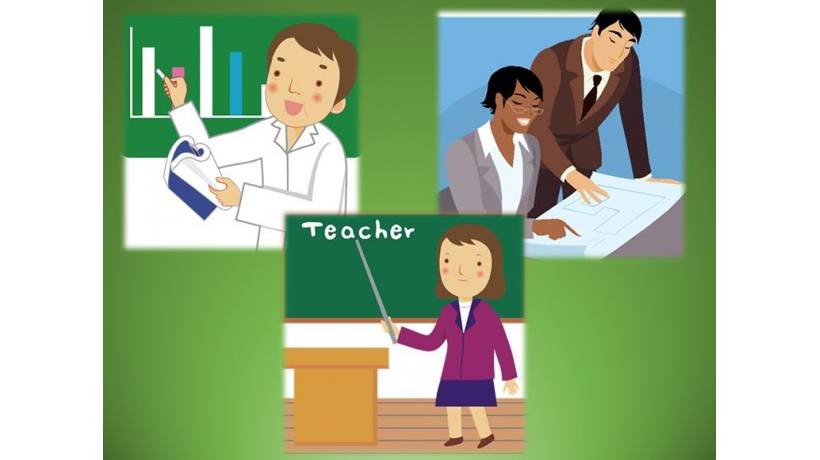Learner Decision Journey And Consumer Decision Journey
Teachers can learn a lot from professional marketers in terms of how they plan their marketing strategies so as to reach their business goals. The business of teachers is to reach the educational objectives they have set up for their courses or classes alike. This will allow them to engage students in the learning experience and, most importantly, to proactively predict what students might be doing with the materials teachers are providing them in more analytical way.
Certainly, a teacher, armed with insights from other disciplines, will tap into a world of innovation; however, a dedicated teacher with less insights from other disciplines will be only tapping into his own world, the world of black and white of education. Bear it with me and get to know other people from other disciplines such as digital marketers, and have a chin wag with them. Amazingly, you will be surprised about the ideas you will be getting from them since they also deal with people in a digital world like you, except that they are a step above you in that field.
What Ιs A Consumer Decision Journey?
In 2009, Mckinsey published an article entitled “Consumer Decision Journey” by David Court et Al where they coined the term Consumer Decision Journey (CDJ): This is basically the journey of an online customer and how they go from uncertainty to certainty just to end up into being a loyal customer, and eventually act as an evangelist for the brand. This decision journey can be replicated and adapted for the online learning environment and for learners who are about to enter this learning cycle.
A consumer decision journey is composed of 6 interdependent stages: Trigger, initial consideration set, active evaluation, moment of purchase, post-purchase experience, and loyalty loop. The businesses should trigger the need and stimulate the consumer to think about it, then the consumer would initially gauge their options compared to other alternatives that they’re already having. After going through these stages, the consumer then will dig deeper in the candidate business that they have already opted for in terms of whether it satisfies their needs; if it satisfies their expectations, they will buy the product or the service of the selected business. This instance in consumer decision is termed as the moment of truth, because it defines the success and failure of what was done before.
The journey of the consumer doesn’t stop here, but they will go through a post-purchase experience where the impression and feel of what s/he has bought will decide whether loyalty loop or another trigger will be the next move.
What Ιs A Learner Decision Journey?
Learner Decision Journey (LDJ) is inspired from Consumer Decision Journey, but with some adaptations that are compatible with the educational and didactic nature of learning. We will define each stage of the learning decision journey, clarify the questions we should be asking, the method we should be deploying for each stage to analyze the available data, and evaluate each.
As said before, this model is not one-stop station, but rather a guide that can be adapted, questioned, and improved for the sake of reaching informed decisions and proactively engage with learners. Below is a suggested graph of the learning decision journey where in this article we will talk about the first 3 stages, and in the sequel article we talk about the remaining elements of LDJ.

Figure 01: Learner Decision Journey (designed by Mehdi ZOUAOUI)
Let’s imagine that we have a cohort of learners who want to learn English and who they spend a considerable amount of time in front of their devices surfing on different websites. We want to capitalize on that time they’re spending online and turn their daily surfing habits into a learning experience by reshaping them to fit our learning outcomes.
Basically, learners will go through this cycle of learning decision journey just to be able to move on to an upper learning decision journey with different triggers and learning outcomes unlike the original consumer decision journey that attempts to keep consumers in a loop of loyalty. Accordingly, we have 7 stages in our Learner Decision Journey that are organized as follows:
- Trigger.
- Initial Consideration.
- Active Learning.
- Moment of Learning Truth.
- Post Learning Experience.
- Switch.
- Trigger.
The First 3 Stages Of A Learner Decision Journey
1. Trigger The Tiger
Learners who are striving on to learn English are continually exposed to different sets of actions and events that may start off their desire to learn a new set of language skills. Sometimes learners don’t even know what they should know till they are exposed to it, and here the role of the ninja teacher comes in.
At this stage, the teacher should spend a span of time looking at where his students spend most of the time and send them out pop-up surveys that don’t exceed 5 questions, or maybe organize online focus groups with them to see what they are trending for. Upon that, the teacher may reflect and have some insights on what learners need transcending the urge to fulfill what they want. This is important, because the teacher is trying to create the desire for them to learn something new they are not aware of.
2. Initial Consideration
Here we want to build the awareness for learners in order to create the drive for them so they start their Learner Decision Journey and also we try to create a room for learning objectives in their considerations and priorities.
Teachingly speaking, you’re competing against other activities students are tinkering with which have not learning objectives as a built-in component. The value that you’re trying, per se, to seize here is time. The non-learning activities are enticing and have some mesmerizing effects on learners’ time.
Hence, you need to roll up your sleeves and understand your learners better by conducting another layer of mini-surveys or research about the most common online hubs they spend most of the time in. These hubs, namely your competitors, can be something such as social media websites. While it’s hard to compete against the burning desire of a learner who wants to enjoy some time with these websites, you can, if you’re wizard teacher, bring these competitors to your camp and turn them into soldiers that corroborate your learning objectives by tapping on what attracts learners to your competitors and therefore build your learning strategy according to that.
Basically, you may want to build a simple teacher’s competitive intelligence chart that answers questions including where your learners generally surf, what time, and what they generally look for. If you succeed to catch the right “what”, then you’ve just made a step towards understanding how to mitigate their desires and your aspirations.
The metrics that can help a teacher who only wants to conduct a simple research about his students and the websites they often surf on may be clickstream analysis. It’s outside the scope of this article to discuss clickstream analysis, but maybe it’s an opportunity to look for digital marketers colleagues in your contact list.
3. Active Evaluation
At this stage, we are actively evaluating and auditing the activities and lessons we have created whether they are satisfying the students’ needs or not. In order to be sure of that, we have to conduct experimentation and testing of learning experiences we have designed or those under design. This also includes the management of failure of fear and also planning for learning outcomes that are not black swans that arbitrarily pop up without our permission.
Something to keep in mind while designing an online learning experience is that when you fail, you will fail fast and stand up fast; and that is one of wonders of internet, allowing for diffuse mode and acquisition-driven learning where the focus is on the general picture of the learning rather than a specific individual chunk of learning. To get most out of that, it is a welcome prospect that you design two versions of your learning model through different variables. This will allow you to conduct A/B testing over different elements. For instance, you can send the same learning content but in different times and through different channels to see the rate of interaction of learners with it, and accordingly tailor it according to the feedback and behavior you collect from these two tests. Here we are not seeking for more solid scientific evidence, but rather looking for correlations that help us spur and trigger learners intrinsic motivation by avoiding what they don’t feel zealous about.
Wrap-Up
We have seen that teachers can approach many other professionals such as marketers to get insights from them. A Consumer Decision Journey describes the cycle of a given person while trying to buy something online, and this can be adapted to learners learning online, namely Learner Decision Journey (LDJ). In this article we have seen 3 stages of LDJ: Trigger, initial consideration, and active evaluation. What should the teacher do after that? Any ideas? I got that for the next chapter.









